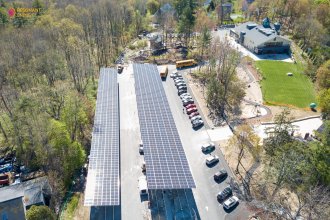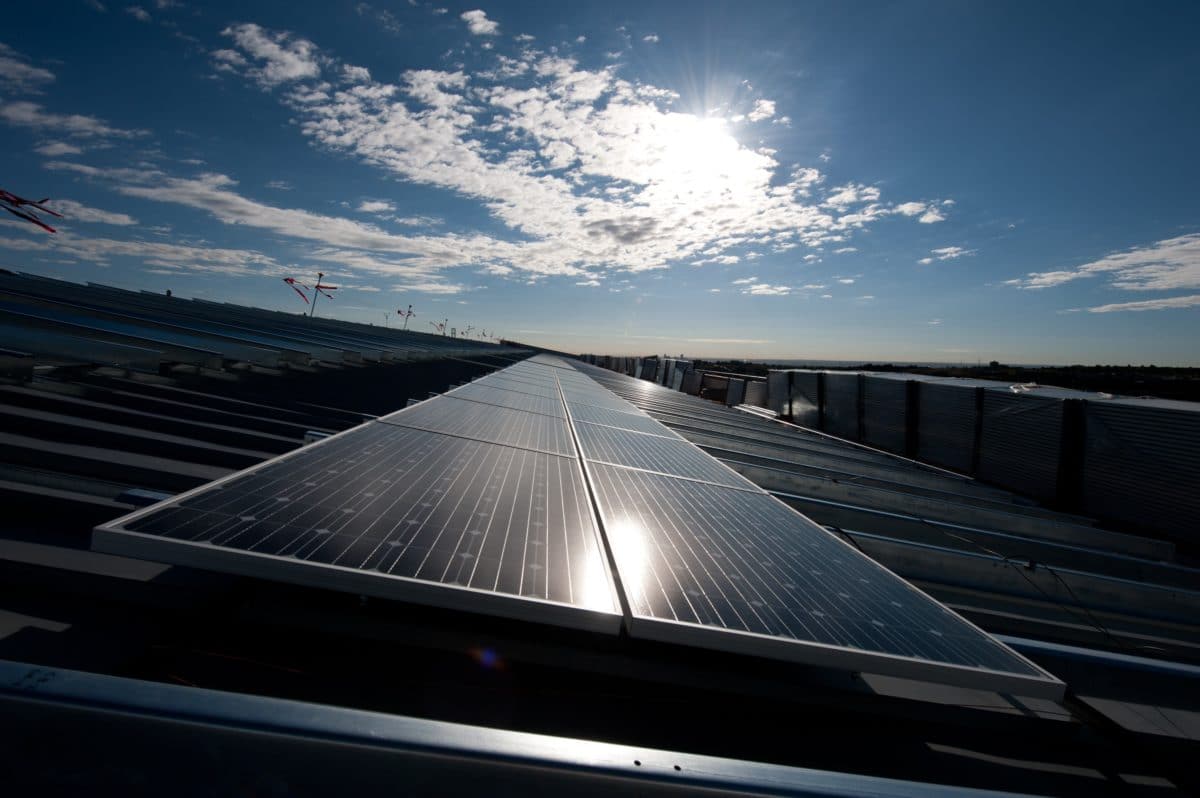Resonant Energy installed a 326 kW solar array above a reconfigured parking lot canopy for the Discovery Museum in Acton, Mass.
The solar canopy project was estimated to cost slightly more than $1 million, while the total 25-year savings is expected to close to $1.3 million. The system is designed to produce 365.89 MWh each year, equivalent to the carbon sequestered by 307 acres of US forests each year.

The array consists of 808 Jinko Solar 405 W PV modules. The Eagle 72HM modules have a 25-year standard output warranty, 20.13% efficiency, and 2.8 W rated power per cell. The modules are warranted to have an output of 83.1% at the end of the 25-year warranty.
Four Solectria PVI 60TL inverters were selected for this project, and Solectria provided monitoring for the system, built-in with the inverter capabilities. The string inverters have integrated arc fault protection, three maximum power point trackers with five inputs each, modbus connectors, remote diagnostics, and are compliant with UL 1741SA.
RBI Solar was the racking manufacturer, which supplied its CP-Truss model racking for the installation.
The array was oversized so that 50% of the power generated will serve all the needs of the museum, and the other 50% will be sold to local nonprofit organizations at a discounted rate. Currently, the Haley House, a soup kitchen in Roxbury, Massachusetts, has signed on for discounted renewable energy, and three more nonprofits will be announced.
The array comes as part of Discovery Museum’s five-year sustainability plan, unanimously approved by its board of directors last June. The plan calls for activities like becoming carbon-neutral, reducing water usage, minimizing waste, and sustainable investment.
“Our move to 100% on-site generated solar electricity is a cornerstone of our action plan to reduce the environmental impact of the Museum’s operations and lead by example to inspire others to take action on behalf of our planet,” said Neil Gordon, CEO. “We hope to set the bar for what museums and other cultural institutions should be looking to do to help combat climate change and educate their communities about planning for sustainable and resilient futures.”
This content is protected by copyright and may not be reused. If you want to cooperate with us and would like to reuse some of our content, please contact: editors@pv-magazine.com.









By submitting this form you agree to pv magazine using your data for the purposes of publishing your comment.
Your personal data will only be disclosed or otherwise transmitted to third parties for the purposes of spam filtering or if this is necessary for technical maintenance of the website. Any other transfer to third parties will not take place unless this is justified on the basis of applicable data protection regulations or if pv magazine is legally obliged to do so.
You may revoke this consent at any time with effect for the future, in which case your personal data will be deleted immediately. Otherwise, your data will be deleted if pv magazine has processed your request or the purpose of data storage is fulfilled.
Further information on data privacy can be found in our Data Protection Policy.